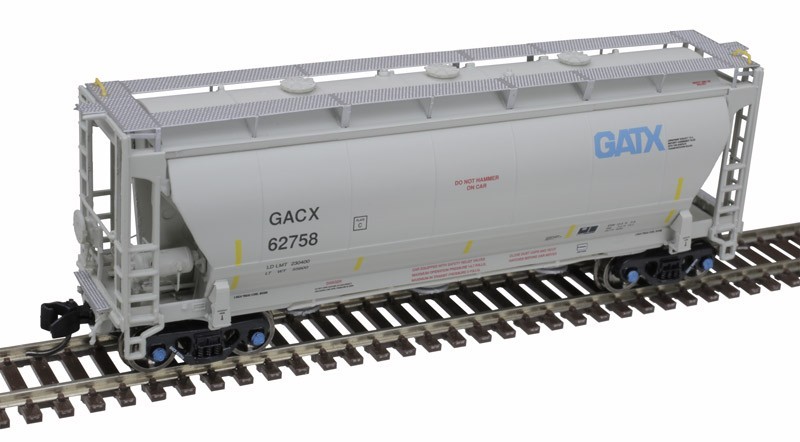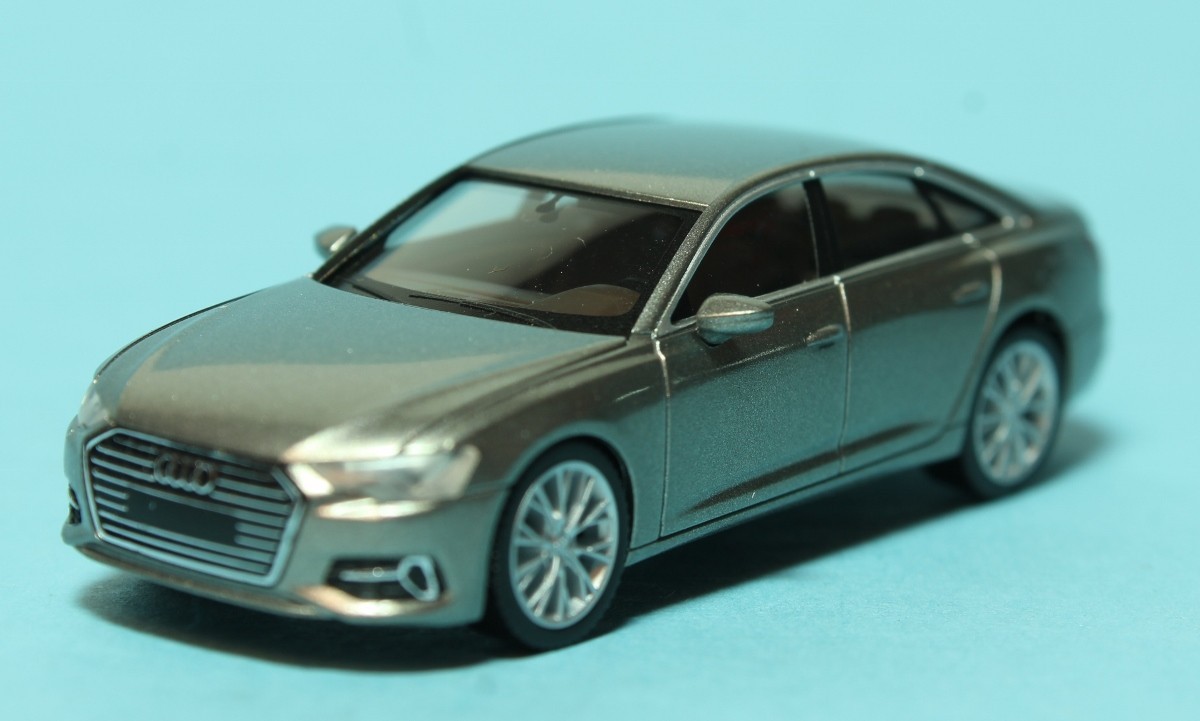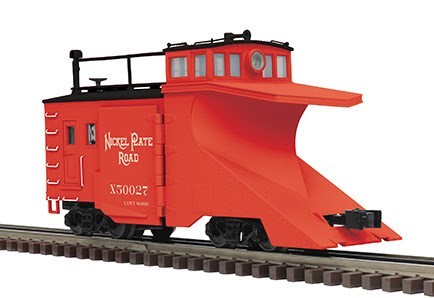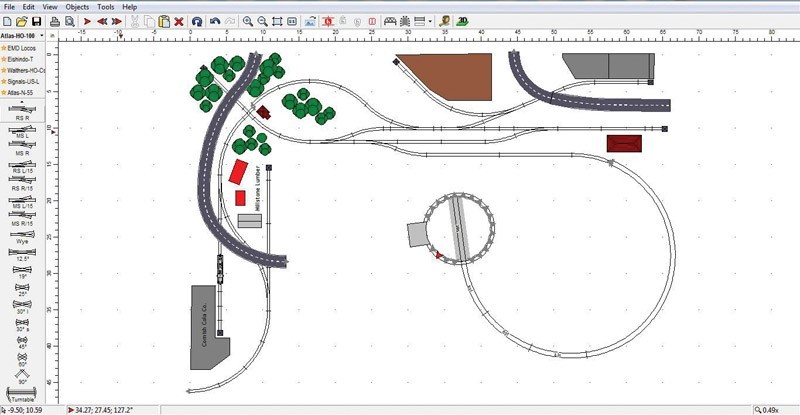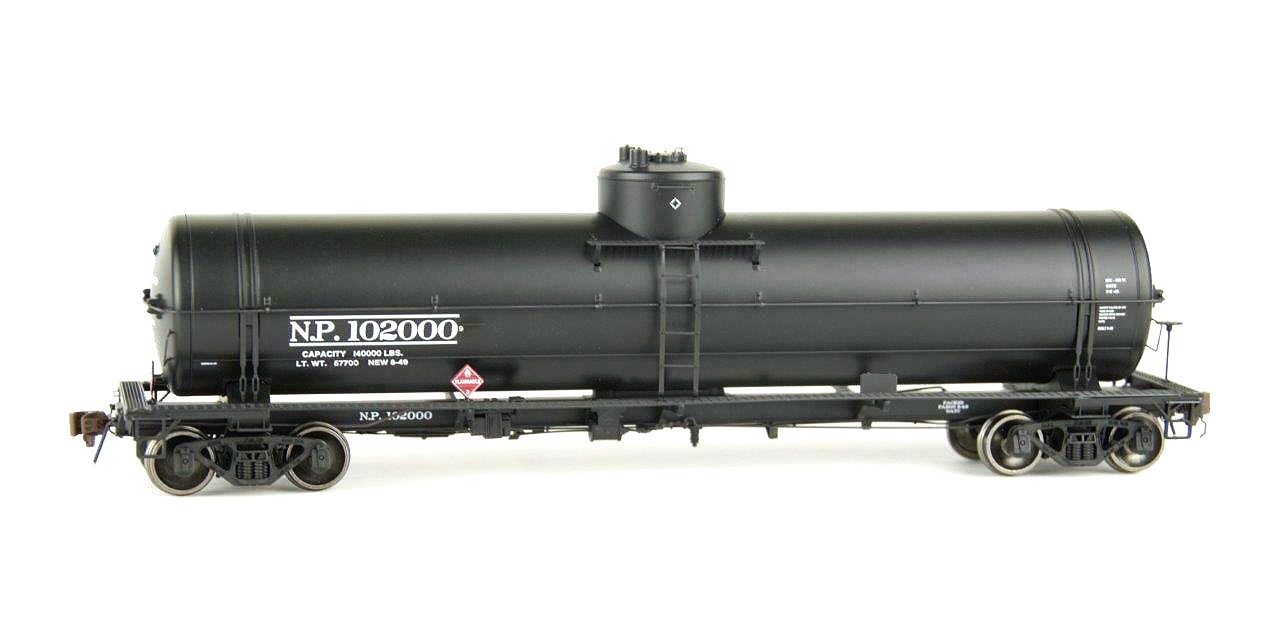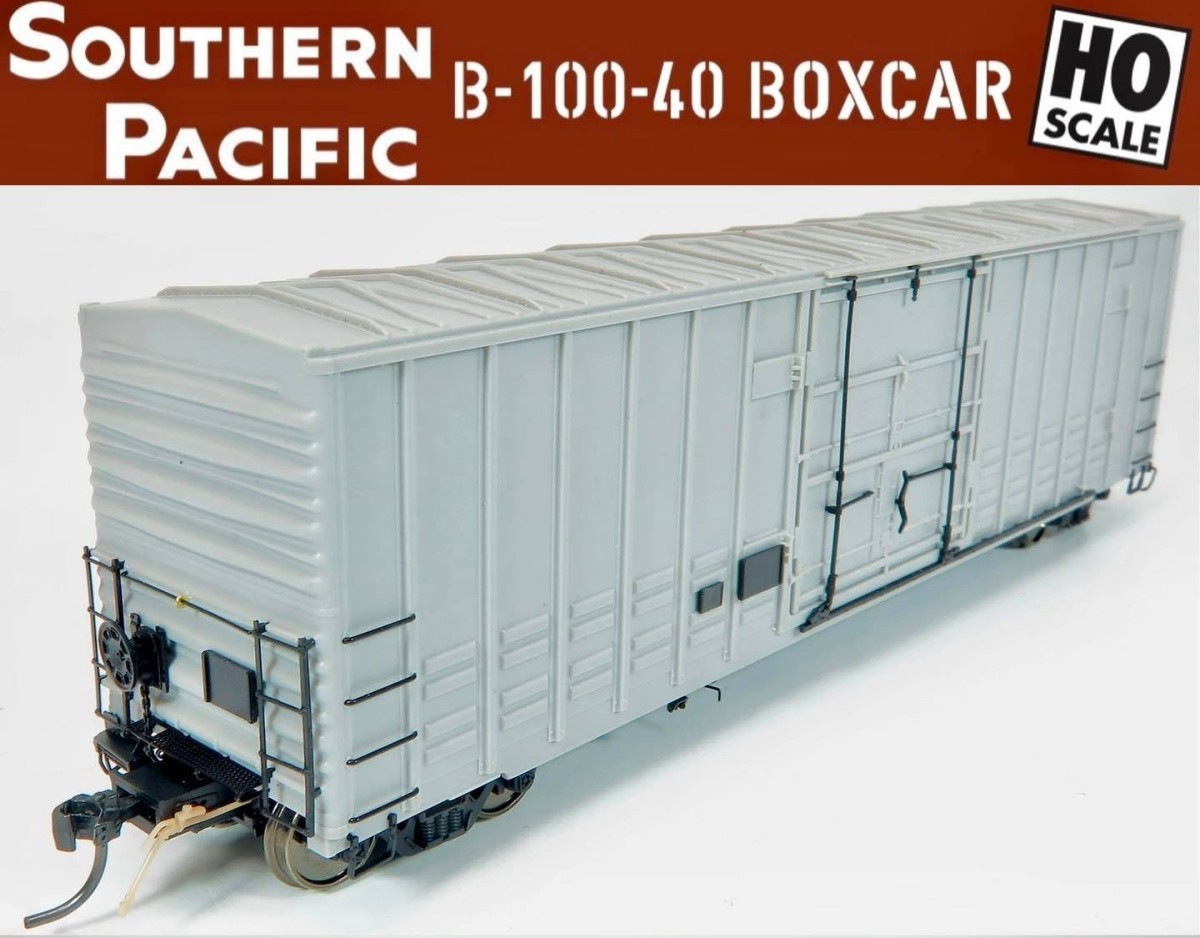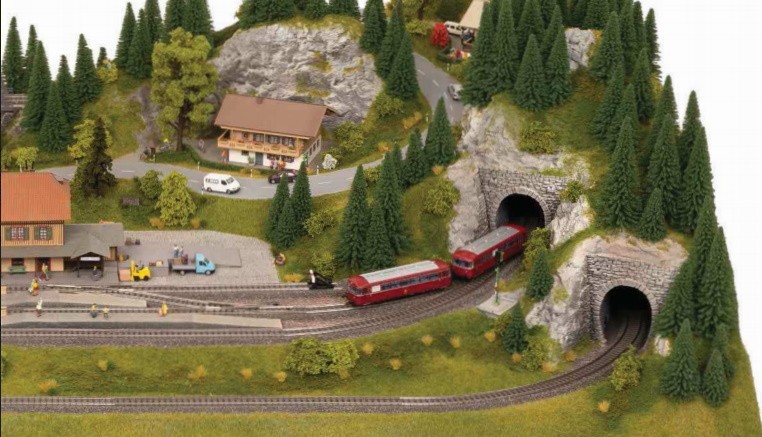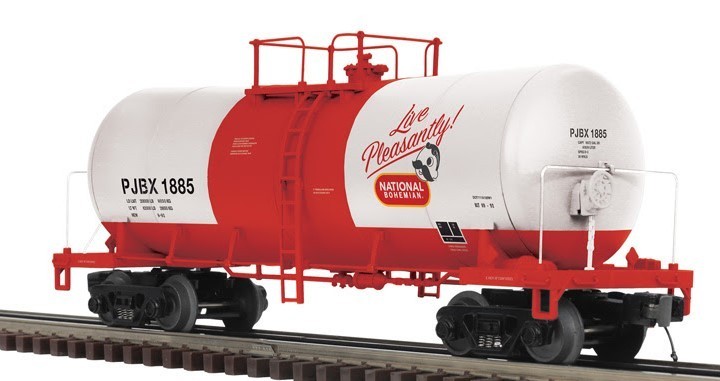
Introduction
This review examines Atlas' Master Line Plus model, item no. 50 006 220, painted as General American (reporting mark GACX) No. 62758. A brief history of this hopper design is told by Atlas:
The Trinity 3230 Pressure Differential (PD) covered hopper is essentially a smaller version of TrinityRail’s 5660 PD. The smaller version was developed from the base design introduced by Thrall Car in the late 1990s.
The smaller size enables the cars to be loaded with heavier ladings such as cement and various grades of fly ash. Most of the cars are operated by Railcar (Leasing) companies or Shippers.
You can find this model through this link: Atlas N 3230 Covered Hopper.
Continuing into this review you will find these features:
- All new tooling
- Ready to run
- Injection molded plastic
- Fine scale detail
- Etched metal roofwalks
- Crisp painting and printing
- Magnetic coupler
- Metal wheelsets
If you are curious, here are the technical descriptions:
Type: Covered Hopper
AAR Class: LO: A permanently enclosed car, other than a box car, regardless of exterior or interior shape, for handling bulk commodities, with or without insulation and provided with openings for loading through top or sides with weather-tight covers or doors. Car may be provided with one or more bottom openings for unloading, with tight fitting covers, doors, valves, or tight fitting slide or gate to prevent leakage of lading. Car may be provided with facilities for discharge of lading through openings in top or sides and may have one or more compartments. Mechanical or other means may be provided within car to expedite loading or unloading.
AAR Type: C612
Detail Info: Covered Hopper, Pressure Differential, Permanent Roof, 3000-4000 cu ft capacity
Plate: C
Max Gross Weight: 286000
Load Limit: 229800
Dry Capacity: 3230
Ext L/W/H: 45' 8" / 10' 5" / 15' 6"
This is a new-tooled model made up of plastic and metal parts and components. I did not try to disassemble the body although it appears to be a bottom, two sides, two ends, and a roof. The freestanding ladders and supports that make up the end cages look to be separate parts, too. The ladder rungs and grabs are moulded as part of the piece.
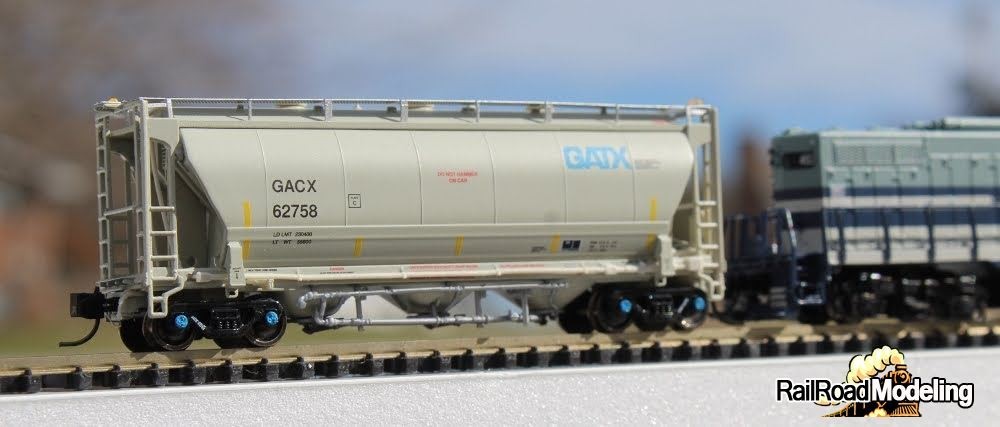
Let's knock around this model
Atlas packages this model in their clear plastic top-opening case, designed for stacking as well for protection of the model. The model is securely held in a form-fitted cradle, two pieces of foam helping steady the model. Soft plastic sheet helps protect the model from scuffing. Warranty and registration documents are included.
When I first removed the model from the case, I found crisp molding, see-through photo-etched parts, a small diameter wire simulating air brake piping, metal couplers, and sharp printing. Molding is high-quality with little visible flash or noticeable seam lines, and no sink marks or ejector marks. No accidental glue smears are present, either. The flash I found was noticed only after enlarging the photographs, and is invisible per the "3-foot rule." A pointy hobby knife should make quick work of it.
I do not have a good reference for this car but physical trivia is: four large panels per side; 6-rung ladders; open grate roof walk; 14 side sill openings; racks on each discharge gate.
Detail
Plenty to be found! Starting up top, each of the hatches are separately applied. The running board is see-through. Wire grabs and retainers are on the roof laterals. See those two Hershey Kiss-looking things? Those are safety pressure relief valves, which can be set for 14.7 or 17 psi. The roof detail is surrounded by photo-etched running boards, with a wire grab handle at corner where the ladders attach. A photo-etch crossover is mounted on the ends above the couplers.
Down on the B end "porch" is full of air brake components. A well rendered air brake system is installed on the brake end "porch" under the slope sheet. They are plastic parts with wire simulating air lines. You may see that the mounting hole in the reservoir looks oversized but I did not see that until scrutinizing the enlarged photographs. This car is equipped with wire cut bars and air brake hoses - impressive for N scale. However, the brake wheel is not molded with the same fidelity as the other parts. Cutting open the holes in the wheels with a hobby knife would be tedious. The train line is mounted along the sill on one side, and the brake rod is on the other. This is because they would interfere with the hopper bays and pressure system piping.
Flipping the car over, we see the nicely modeled pressure differential apparatus: aerators; couplings; pipes, brackets and dozens of other parts, assembled from several parts. If you want to know what all of those pipes and couplings and valves are, you can see the diagram here: Trinity/Thrall Pressure Differential Car.
You can also see that the detailed trucks are held in place with pins, and the wheels sets are metal. The trucks are molded with brake shoes and spring detail. The bearing caps on the 100-ton trucks are blue. I researched why and discovered blue identifies Brenco Class K 6-1/2 x 9 bearings. Those are used to carry freight cars of this models' weight classes. You can read more here.
The couplers are mounted in boxes.
Jewel Case
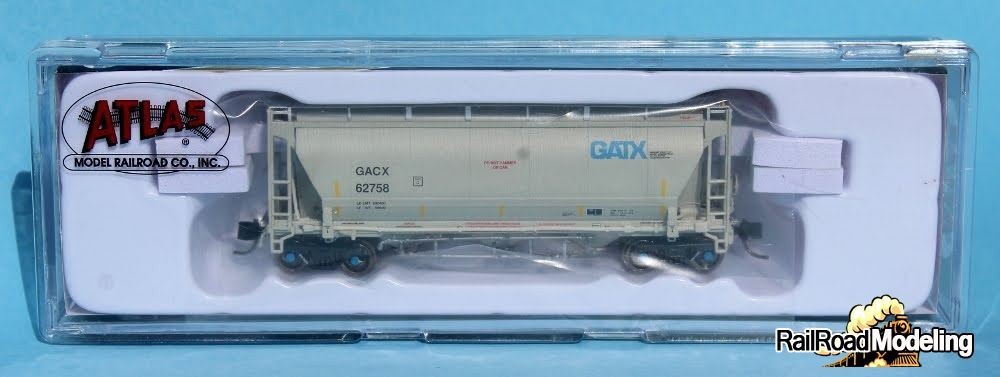
Packaging
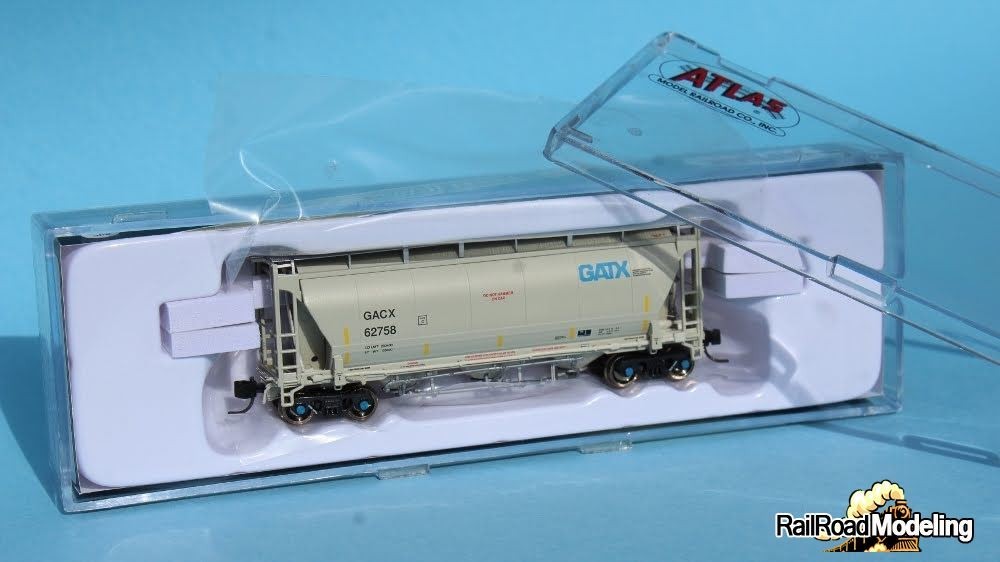
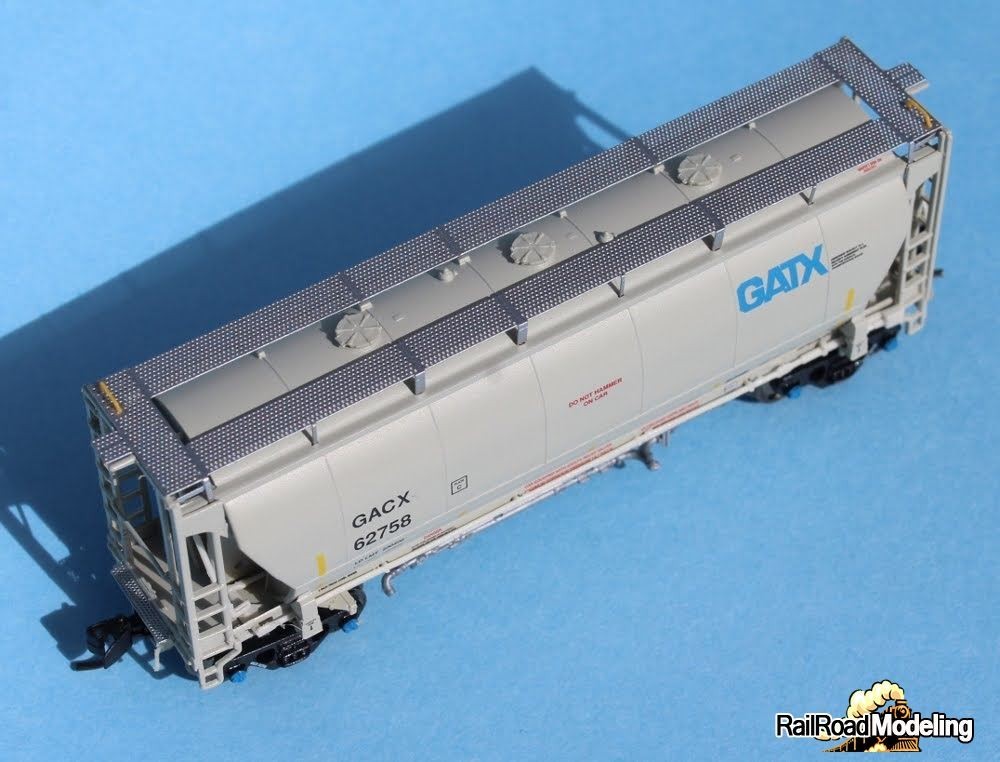
Photo-etched metal roofwalks up close
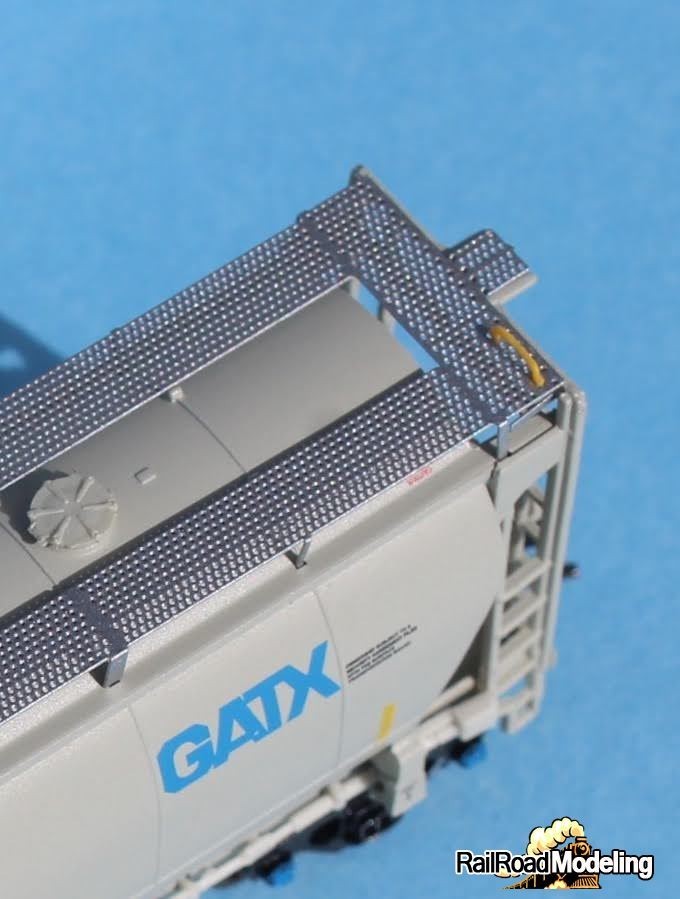
Trinity/Thrall Pressure Differential, and printing

Trinity/Thrall Pressure Differential
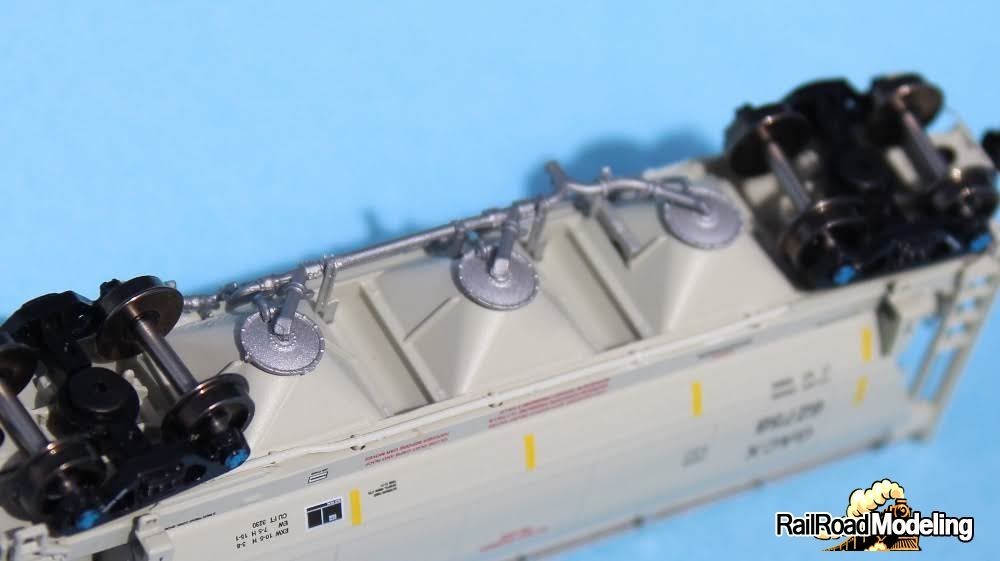

Paint and Lettering
Atlas' finish and printing is first-class. All stenciling is legible. While gray hoppers are ubiquitous and often boring, this GACX/GATX C612 LO features eye-catching splashes of color: GATX blue; DO NOT HAMMER ON CAR in red; reflective yellow stripes. Atlas also reproduced the reporting marks and number on the trucks.
Atlas released six road names:
1. Chicago Freight Car (CRDX) (Gray/Black)
2. Roanoke Cement (RCCX) (Gray/Black/Blue)
3. Trinity Industries Leasing (TILX) (Gray/Black)
4. TXI (GBRX) (Gray/Black/Blue)
5. General American (GACX) (Gray/Black/Blue)
6. CIT Group (CBFX) (Gray/Black)
Each road name is available in four road numbers. As of publication of this review, an undecorated model is not offered.
Railroad Picture Archives does not have an image of GACX 62758 but their series has images of 62756 and 62777, but neither are a 3,230 Cubic Foot Pressure Differential Covered Hopper.
Printing
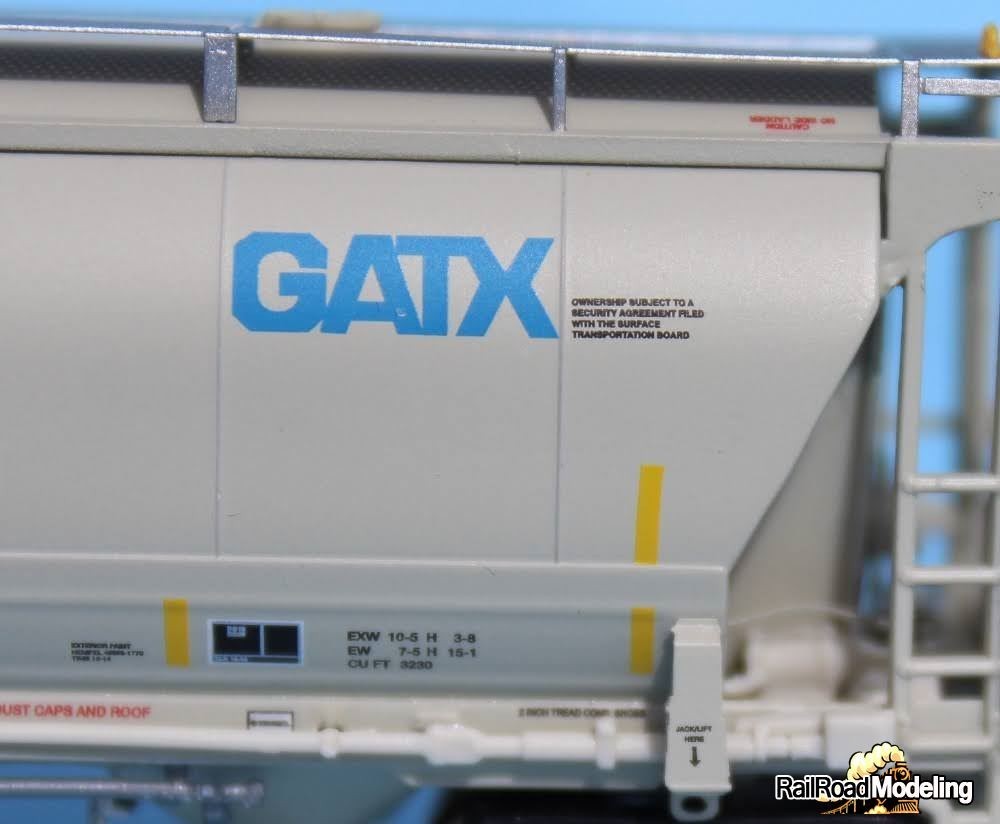
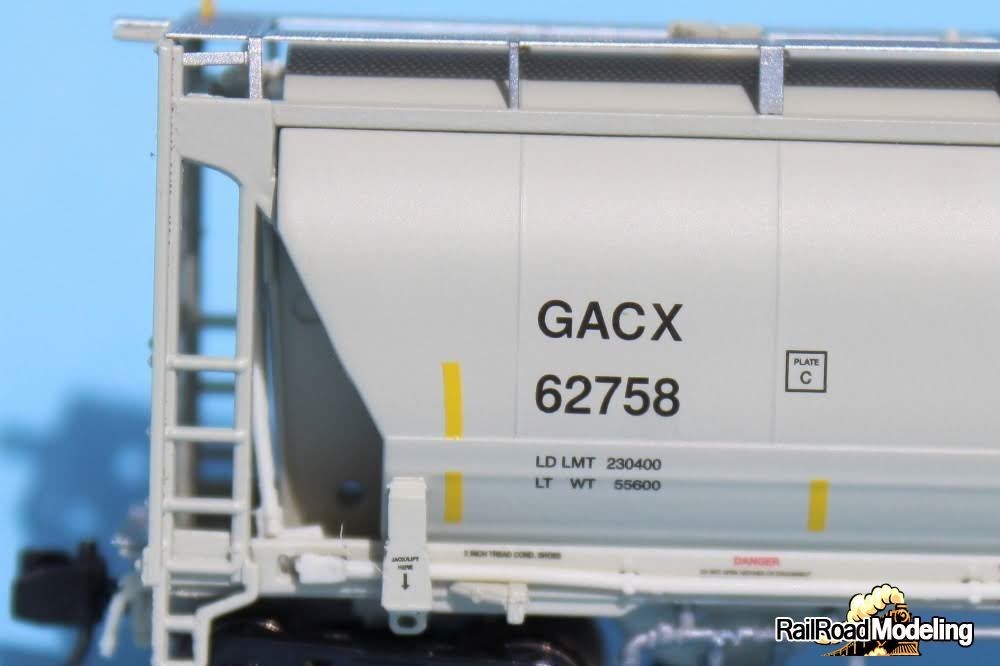
B end
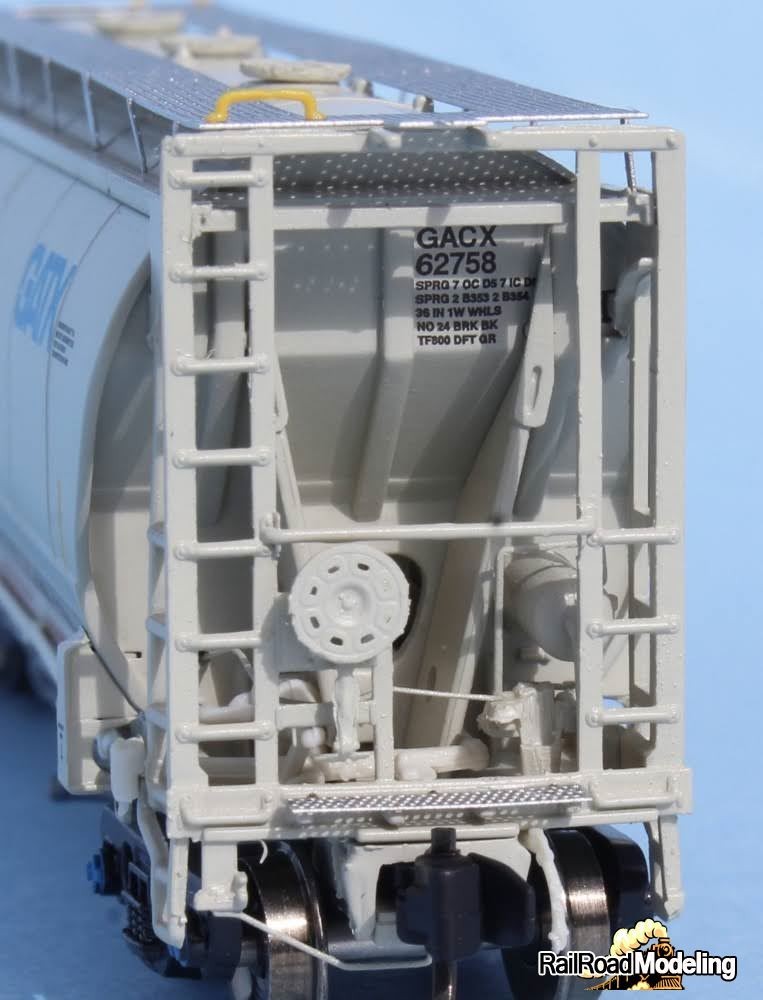
Conclusion
Covered hoppers are everywhere on North American railroads and modelers of the current era may want several of these gems. Atlas' Master Line Plus has bumped up the bar with the level of detail. Their rolling performance and fidelity of detail is top-notch. Even when you aren't running this model in a train, you can spend time reading the amazing printing. My only gripe is the flash on some parts although, as mentioned, it is not noticeable unless you make an effort to see it.
If you model the present day, I recommend a few of these Trinity 3230 Covered Hoppers.
Please remember to mention to Atlas and retailers that you saw this model here - on RailRoad Modeling.










